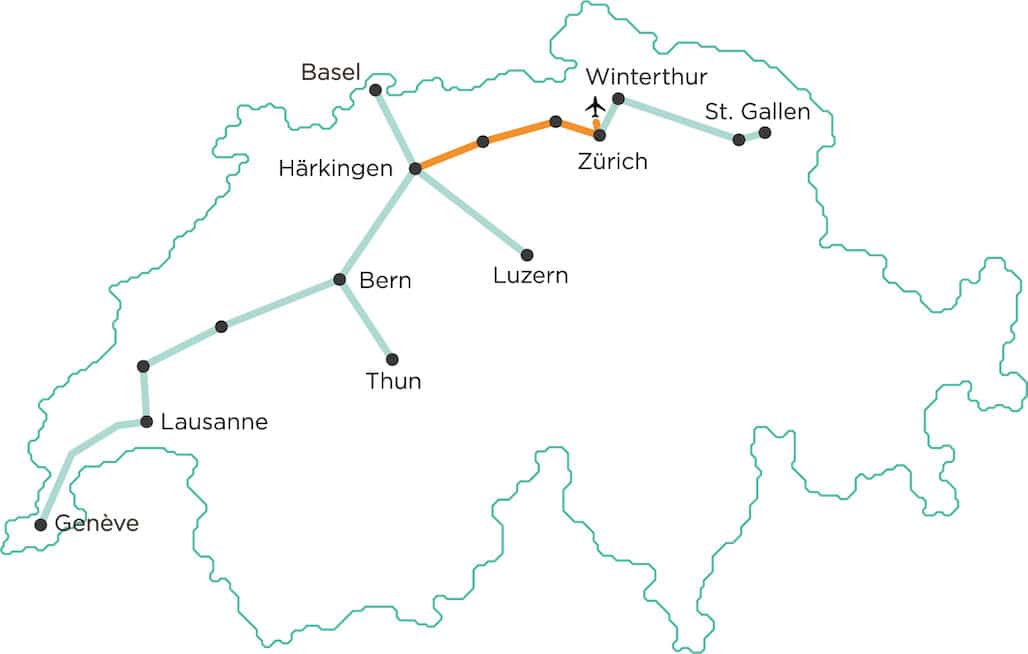Cargo Sous Terrain (CST), Switzerland’s long-planned underground freight network, has been in the making for more than a decade. The concept is simple: instead of clogging up roads, goods would be transported via automated wagons moving through subterranean tunnels, loaded and unloaded at designated hubs.
Yet enthusiasm for the project has cooled. Last year, municipalities and cantonal governments voiced scepticism, describing CST variously as unachievable, challenging or not feasible. Soon after, CST announced delays and job cuts.
The original plan had envisioned self-driving electric vehicles travelling on underground roads, charging inductively as they moved. That has been abandoned in favour of cable car technology: wagons will now ride on rails, pulled by a cable, according to a recent press release.
The timeline has now slipped by five years. Instead of 2031, the first goods are expected to roll underground no earlier than 2036.
Cost estimates have been revised downwards. CST now expects the project to require investment of around CHF 25 billion—roughly a third less than previously forecast. The savings stem in part from the technological rethink.
The change is more pragmatic than it is futuristic. Some wonder if it is step backwards. Although the electric-vehicle concept was innovative, it would have required costly development and created additional technical challenges. Inductive charging would have generated substantial heat, requiring expensive cooling and ventilation systems—a concern raised by municipalities, worried about groundwater temperatures. Cable-driven wagons, by contrast, simplify operations and reduce energy demands.
There is also the matter of congestion. With autonomous vehicles, traffic jams in the tunnels would have been a risk. The cable system, operating like a chairlift, avoids this: vehicles slow only briefly at hubs to load and unload, then continue at a steady speed.
The overhaul has been met with approval from experts. Leon Zacharias, a logistics specialist at the University of St Gallen, told SRF he thinks the switch is sensible. In large infrastructure projects, technology shifts during the planning phase are not unusual. Uniform speeds and regular intervals reduce system complexity, said Zacharias.
Whether the CST mega project will become a reality remains uncertain. But for now, at least, Switzerland’s underground freight dreams remain alive.
More on this:
CST press release (in German)
For more stories like this on Switzerland follow us on Facebook and Twitter.

